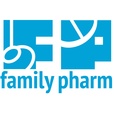
Summary: The bulk of this episode is based on the UK NICE guideline: Feverish illness in children under 5, published in 2013. http://guidance.nice.org.uk/CG160 The guideline covers: Thermometers and the detection of fever Clinical assessment of the child with fever (using the traffic light system) Management by remote assessment Management by the non-paediatric practitioner Management by the paediatric specialist (investigations summarized below) Antipyretic interventions The Traffic Light System in assessing risk for serious infection This assessment tool takes into consideration color/appearance, activity, respiratory, circulation and hydration, and "other" parameters. For each parameter, their associated signs and symptoms are assigned a color code: "green" (low risk), "amber" (intermediate risk) and "red" (high risk). The table can be found here. Age-appropriate investigations for pediatric fever Once the risk for serious infection is determined, the following investigation should be performed: Age CBC diff BC CRP UA/UC LP CXR Stool culture 15 or =3mo, RED yes yes yes yes yes yes if indicated >=3mo, AMBER yes yes yes yes if 39 and WBC >20 if indicated >=3mo, GREEN no no no yes no no if indicated And at the same time, empiric parenteral antibiotic coverage for meningitis (3rd generation cephalosporin plus ampicillin/amoxicillin) should be started if LP is indicated.
